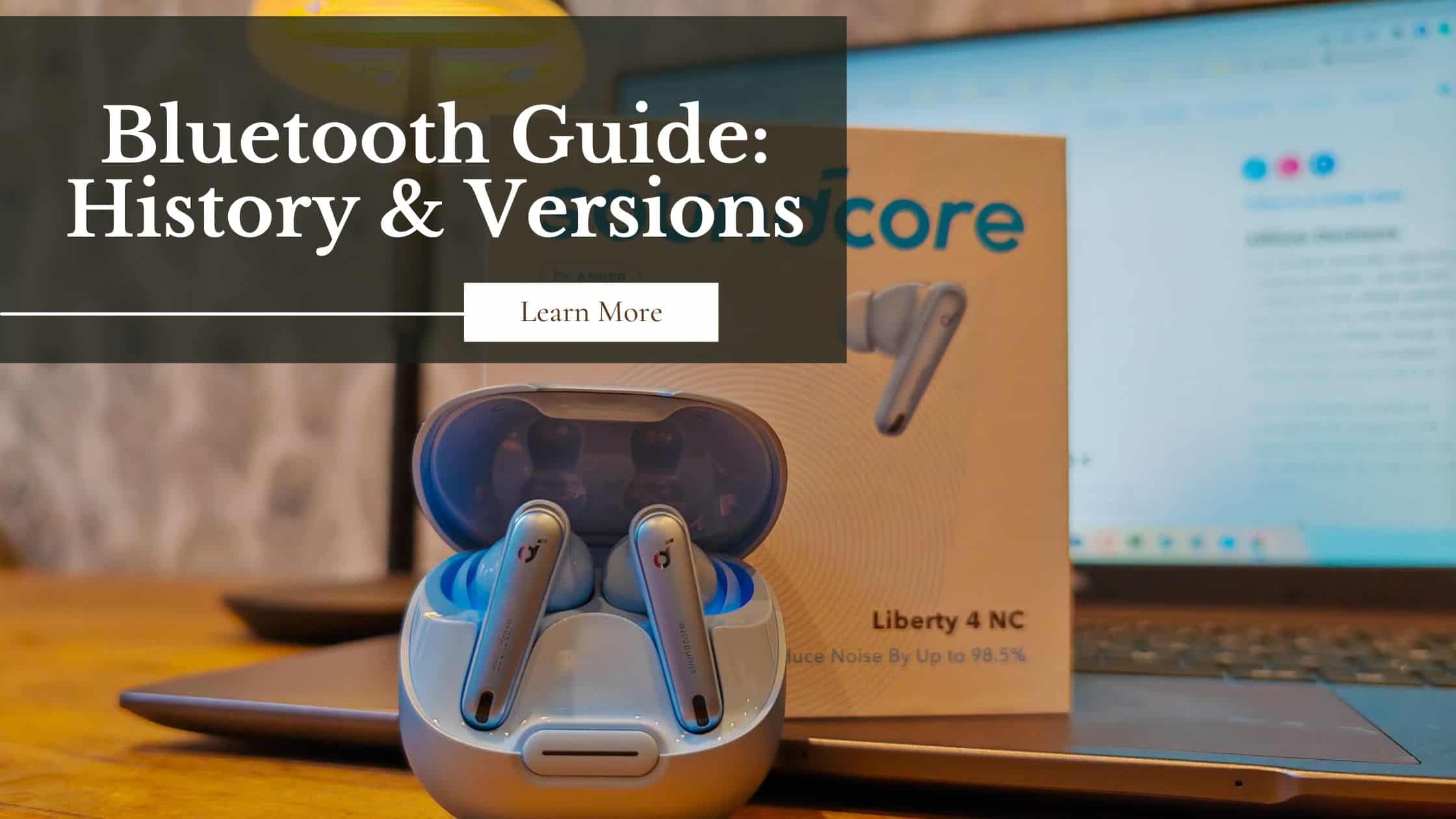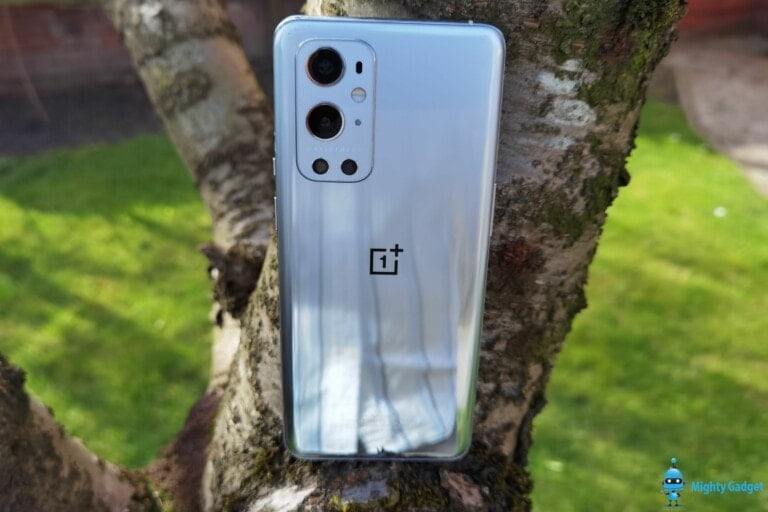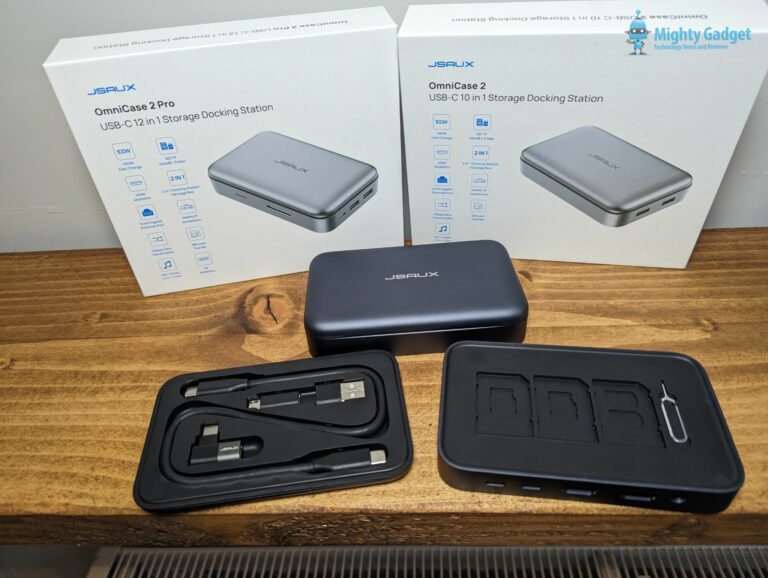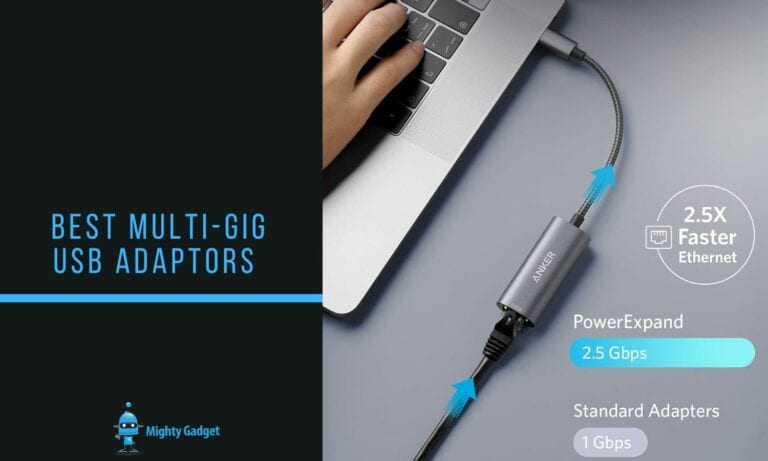Any links to online stores should be assumed to be affiliates. The company or PR agency provides all or most review samples. They have no control over my content, and I provide my honest opinion.
I would say most people know roughly what Bluetooth is and use it regularly. But how much do you really know about this wireless technology that’s now over 25 years old?
When buying a new phone or earbuds, are you aware of all the different technologies that can affect the performance of Bluetooth?
This is part one of my guide. In the next guide, I will cover the specific Bluetooth codecs available and the difference in performance between each codec.
Related Reviews
- 1More Evo Review
- Tozo Golden X1 Earbuds Review
- Anker Soundcore Liberty 4 NC Review
- Status Audio Between 3ANC Wireless Earbuds Review
- Edifier TWS1 Pro 2 Active Noise Cancellation Earbuds Review
- Edifier W320TN Earbuds Review
- Khadas Tea DAC Bluetooth Headphone Amplifier Review
What is Bluetooth?
Bluetooth is a wireless communication standard that allows devices to connect and exchange data over short distances using radio waves in the 2.4GHz and 5GHz frequency bands. It was created in 1994 by Ericsson and was named after Harald “Blåtand” Bluetooth, a 10th century Scandinavian king.
The History of Bluetooth
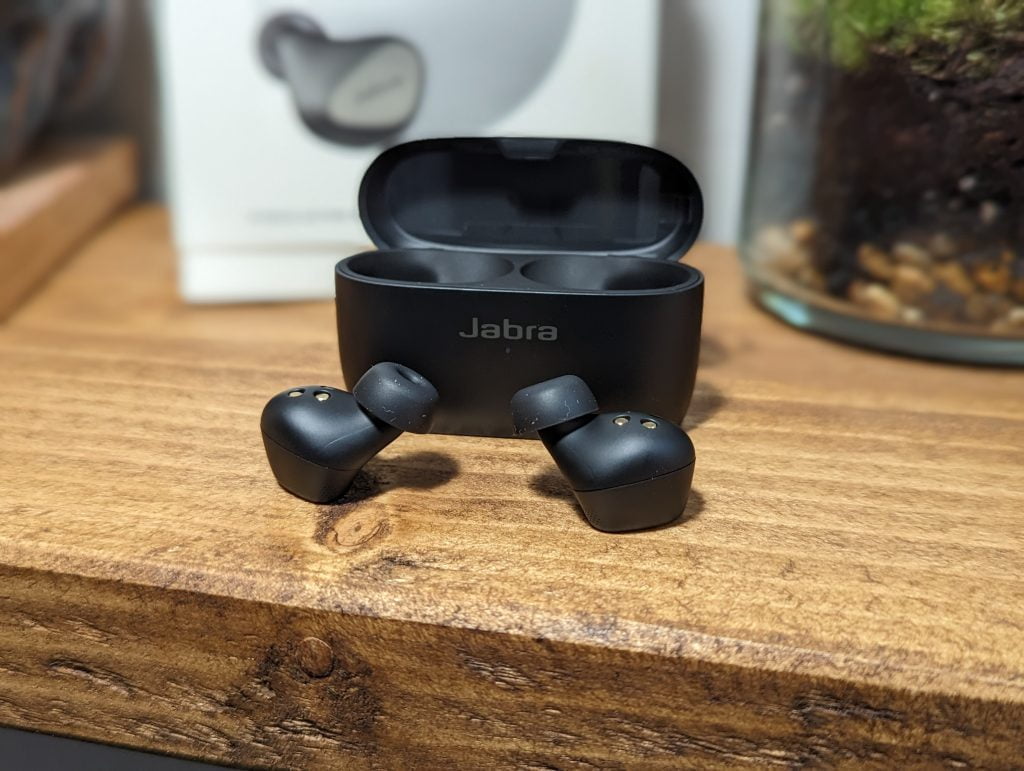
Who Made Bluetooth & Why is Bluetooth called Bluetooth?
Bluetooth technology was birthed from the collaborative minds at Ericsson, a Swedish telecommunications company, in 1994. The vision was to create a wireless alternative to the RS-232 data cables. However, it was not until 1998 that the Bluetooth Special Interest Group (SIG) was formed, pooling expertise from powerhouse corporations like IBM, Intel, and Nokia. The name ‘Bluetooth’ pays homage to a 10th-century Danish king, Harald “Bluetooth” Gormsson, known for uniting disparate Danish tribes. Much like King Harald, Bluetooth technology aimed to unify different devices under a singular wireless communication protocol.
The initial release of Bluetooth 1.0 in 1999 brought with it the promise of wireless connectivity, albeit with several hitches that often made connections unstable. Through the years, iterative versions have refined and expanded upon the original blueprint, morphing Bluetooth into a reliable and indispensable tool in our wireless toolkit.
Bluetooth Versions
It’s intriguing to witness the technology maturing, each version addressing the wrinkles of its predecessors while ushering in a suite of fresh capabilities.
- Bluetooth 1.0 and 1.0B:
- Had many issues and were quickly superseded.
- Bluetooth 2.0 + EDR:
- Introduced Enhanced Data Rate for faster data transmission.
- Bluetooth 3.0 + HS:
- Introduced High Speed data transfer.
- Bluetooth 4.0 (2010):
- Introduced Low Energy (LE) technology, marking a paradigm shift towards better power efficiency which was a boon for battery-powered devices like wearables and medical sensors.
- Enhanced data transfer rates, although it maintained a similar range to Bluetooth 3.0.
- Bluetooth 4.1 (2013):
- Brought forth better co-existence with LTE (4G) technology, reducing potential interference.
- Improved connection re-establishment, offering a smoother user experience.
- Bluetooth 4.2 (2014):
- Focused on bolstering security with features like LE Secure Connections.
- Increased data packet capacity leading to faster data transfer.
- Bluetooth 5.0 (2016):
- A significant leap with doubled speed and quadrupled range compared to Bluetooth 4.2.
- Introduced enhanced broadcasting abilities, paving the way for better connectionless services.
- Bluetooth 5.1 (2019):
- Incorporated direction-finding features, allowing devices to determine the direction of a Bluetooth signal, a significant stride towards precise location services.
- Bluetooth 5.2 (2020):
- Unveiled Isochronous Channels, facilitating better management of multiple audio streams.
- Enhanced Attribute Protocol (ATT), reducing latency and improving the responsiveness of connected devices.
Each iteration of Bluetooth brought with it a promise of better connectivity, lower energy consumption, enhanced data transfer rates, and improved co-existence with other wireless technologies. The narrative of Bluetooth is one of continuous evolution, striving to remain in tune with the ceaselessly advancing wireless ecosystem, thus securing its place in our pockets, on our wrists, and within our homes.
What is a Bluetooth Codec?
A codec, a portmanteau of coder-decoder, is a crucial piece of software that encodes audio data on one end and decodes it on the other, allowing for the transmission of audio data between Bluetooth-enabled devices. Essentially, a Bluetooth codec acts as a bridge, enabling audio data to traverse the wireless expanse between devices, like a song flowing from your smartphone to your wireless headphones.
When audio data sets forth on its wireless journey, the codec first compresses it to ensure it can travel swiftly and efficiently. Upon reaching its destination, the codec then decompresses the data, reconstructing the audio for playback. However, it’s pivotal to note that not all codecs are created equal. Different codecs have varying levels of compression, which can significantly impact audio quality and latency.
The Role of Codecs in Wireless Audio Transmission
The essence of a codec’s duty lies in its ability to manage a delicate balancing act between three pivotal factors: audio quality, bandwidth, and latency.
- Audio Quality: High-quality audio is a feast for the ears, but it demands a hefty amount of data. A codec must compress audio data adeptly, ensuring it retains a high level of quality while still being streamlined enough for wireless transmission.
- Bandwidth: Bandwidth is the gateway that dictates how much data can flow through at any given time. Codecs must tailor the audio data to fit within the bandwidth constraints of the Bluetooth connection, ensuring a steady and uninterrupted flow of audio.
- Latency: Latency, the time it takes for audio data to travel from source to destination, is a silent disruptor if not kept in check. Low latency is crucial for a seamless audio experience, especially in real-time applications like watching videos or gaming, where synchrony between audio and visual elements is paramount.
By navigating through these intertwined factors, codecs play a pivotal role in ensuring the wireless audio transmission is smooth, high-quality, and in sync with the user’s expectations.
The realm of Bluetooth codecs is a nuanced one, with each codec having its own set of strengths, weaknesses, and ideal use-cases.
Bluetooth Key Terms Explained
The realm of Bluetooth audio, with its invisible threads weaving through the air, carries a lexicon of key terms that underpin the quality and efficiency of audio transmission. Understanding these terms is akin to acquiring a compass, allowing us to navigate the nuanced landscape of wireless audio with informed precision. This guide seeks to unravel the definitions of bitrate, bit depth, sample rate, and latency, elucidating their significance in the broader narrative of audio quality and transmission.
Bitrate
Definition: Bitrate, measured in kilobits per second (kbps), delineates the amount of audio data transmitted per unit of time. It’s the speed at which bits of audio data travel from source to destination.
Impact on Audio Quality: Bitrate is a maestro that orchestrates the fidelity of audio reproduction. A higher bitrate generally translates to better audio quality as more audio data is transmitted, rendering a richer and more detailed sound. However, it also demands more bandwidth. Conversely, a lower bitrate, while being more frugal on bandwidth, often compromises audio quality, leading to a less detailed and sometimes muffled sound.
Bit Depth
Definition: Bit depth, quantified in bits, is a measure of the precision or granularity of audio data. It’s akin to the number of colours available in a palette from which audio can paint its picture.
Relevance in Audio Clarity: A higher bit depth offers a broader spectrum of possible audio values, contributing to better audio clarity and dynamic range. It captures the nuances and subtleties of sound, rendering a more lifelike audio experience. Lower bit depth, on the other hand, may result in a flat or dull audio rendition, missing out on the finer details of the sound.
I am James, a UK-based tech enthusiast and the Editor and Owner of Mighty Gadget, which I’ve proudly run since 2007. Passionate about all things technology, my expertise spans from computers and networking to mobile, wearables, and smart home devices.
As a fitness fanatic who loves running and cycling, I also have a keen interest in fitness-related technology, and I take every opportunity to cover this niche on my blog. My diverse interests allow me to bring a unique perspective to tech blogging, merging lifestyle, fitness, and the latest tech trends.
In my academic pursuits, I earned a BSc in Information Systems Design from UCLAN, before advancing my learning with a Master’s Degree in Computing. This advanced study also included Cisco CCNA accreditation, further demonstrating my commitment to understanding and staying ahead of the technology curve.
I’m proud to share that Vuelio has consistently ranked Mighty Gadget as one of the top technology blogs in the UK. With my dedication to technology and drive to share my insights, I aim to continue providing my readers with engaging and informative content.

